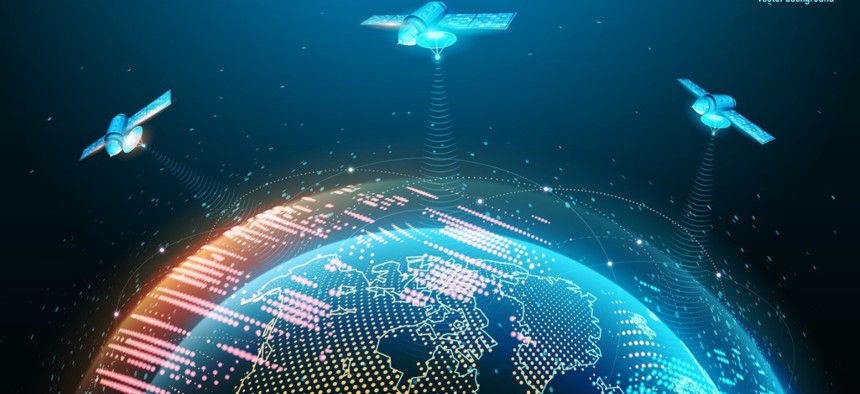Experts Suggest Open Source Intelligence Has Important Role to Play in National Security

Vit_Mar/istockphoto
Open source intelligence is growing in importance.
The U.S. intelligence community, or IC, was born in the early days of the Cold War when the Central Intelligence Agency was created in 1947. The year before, Winston Churchill had said, “From Stettin in the Baltic to Trieste in the Adriatic, an iron curtain has descended across the continent. Behind that line lie all the capitals of the ancient states of Central and Eastern Europe.”
The CIA was created to pierce that curtain.
“You are shaped by the necessity of collection. You have to steal access, insight, and understanding of the adversary,” said Robert Cardillo, former director of the National Geospatial-Intelligence Agency (NGA), another organization created to further that mission. “I think this country and our allies should be quite proud of what we did.”
Cardillo was one of the panelists for a Dec. 3 webcast by the Center for Strategic and International Studies on the need for the IC to recognize and embrace the importance of gathering open source intelligence, or OSINT–all the publicly available information on the internet. The webcast was aired in advance of the release of a CSIS report on ways to incorporate OSINT.
“Intellectually I think our community understands [its] importance,” he said. “We need to confront that core DNA about collection.”
Historically the IC has been dismissive of OSINT, said Lauren Zabierek, executive director of The Cyber Project at the Harvard Kennedy School Belfer Center, and a former NGA employee. “OSINT was thought of as ‘the news.’”
She said the IC culture until recently shied away from using the internet to gather information because of concerns about cybersecurity, coupled with employees’ risk aversion. Even attending industry trade shows has been shaped by that culture. “Look at [who goes] – the analysts don’t go, the leadership does.”
Sean Roche, the former associate deputy director for digital innovation at the CIA, now with Amazon Web Services International Public Sector, said it is about time the IC recognized the usefulness of OSINT.
“It’s time to move [to OSINT], and we can make progress very, very quickly,” he said, adding, “Here’s a message to our analysts, any analyst in the field – you deserve better … You waited 18 months for your [security] clearance, you turned down better job offers, and you’re using Lotus Notes?”
The panelists said the IC has valued intelligence-gathering in the field – the spies and undercover agents risking their covers, and often their lives – over OSINT in part because the fieldwork is their history. Roche called that information the IC’s “exquisite collection.”
But it also is because it has been what justifies their existence. Facing a shortage of analysts, the CIA started investing in artificial intelligence and machine learning to help, Roche said, but “what analysts heard is that they were replaceable.”
“I don’t even like the term ‘OSINT,’” Cardillo said. “I prefer ‘unprotected data.’” He said that would distinguish between information that is generally accessible and that which requires fieldwork to obtain.
“We used to sprinkle open source or unprotected data at the end” of intelligence reports, he said. “I think that has to be fundamentally flipped. I think we need to start with accessible data … I think it should be [part of] every intelligence officer’s job, [to] layer OSINT on that exquisite data.”
“We ask people to conduct acts under covert and clandestine authority that are a risk to the country and themselves,” Roche added. “We owe these people that those decisions [to act] are made the right way … That’s what OSINT is about to me.”
Zabierek, who once worked as an intelligence analyst, concurred. “Everyone should be able to do it … It’s [multiple intelligence sources], not just news. You’ve got commercial satellites doing imagery analysis … snippets of audio, snippets of video, [helping to judge] the veracity of human-derived information. You’ve got to be able to do all of it in order to be able to use OSINT in your analysis.”
That comes back to tackling cultural resistance to change, Cardillo said. “Generally speaking, a confidential report is viewed as more valuable than unclassified, secret is better than that, and top secret is even better,” he said. “There’s a reason why those words are associated with those reports … Sometimes we know how much we spent on that classified report, and sometimes it begins with a ‘B.’ We better make sure the Hill sees how much value we’re getting because we want to get funded next year.”
The panelists said the incentive structure for analysts needs to be rethought. Instead of being judged on the number of reports produced, for instance, it should be based on evaluating the outcomes the reports assessed as possibilities.
“If we don’t do this, I think that we’re going to miss out on the ability to, at the end of the day, protect our nation and protect our people,” Zabierek said.
“Our tech is amazing, the entrepreneurial mindset – we still have that,” Cardillo said. “I’m terribly optimistic, if we can release their potential, the wherewithal, the tools and the incentive structure.”
NEXT STORY: FCW Insider: December 7, 2021



